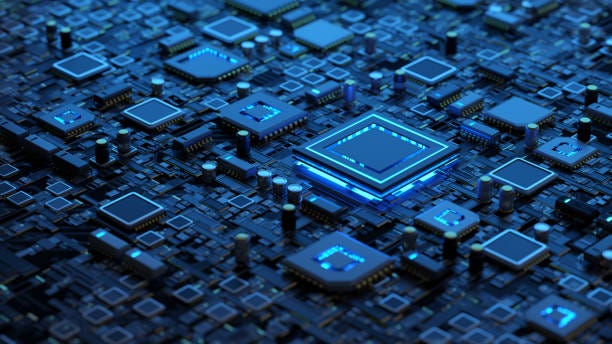Image Augmentation: A Fun and Easy Way to Improve Computer Vision Models

Computer vision has become a ground-breaking area in artificial intelligence and machine learning with revolutionary applications. Computer vision has changed how we see and interact with the world, from autonomous vehicles navigating complex metropolitan landscapes to medical imaging identifying diseases. The brains of this technology are complex models that can comprehend and interpret visual data. However, the caliber of the data these models are trained on significantly impacts how well they work.
This article explores the exciting world of image enhancement techniques, including various methods that can be employed to preprocess and improve images, ranging from traditional image processing techniques to modern deep learning-based approaches. Whether you’re a seasoned machine learning practitioner or a curious enthusiast, this article aims to provide insights into how image enhancement can be an engaging and effective strategy for advancing computer vision applications.
Overview of Computer Vision and its Challenges
Computer vision is a branch of computer science and artificial intelligence (AI) that focuses on giving computers the ability to comprehend and interpret visual data from pictures or movies. It seeks to mimic perception and comprehension of the visual world by the human Toem.
Computer vision’s primary goal is to extract meaningful information from visual input to make decisions or take actions in response to the information. Typical computer vision tasks include:
- Image Classification: Assigning predefined labels or categories to images based on their content, for example, classifying images of animals into different species.
- Object Detection: Locating and identifying multiple objects within an image or video. This involves drawing bounding boxes around objects and classifying them.
- Image Segmentation: Dividing an image into meaningful segments or regions. Each segment represents a distinct object or part of an object.
- Facial Recognition: Identifying and verifying individuals based on their facial features. This technology has applications in security systems, biometrics, and user authentication.
- Pose Estimation: Determining the spatial position and orientation of objects or humans in an image or video. It can be used for human-computer interaction, sports analysis, and augmented reality.
Despite significant advancements, computer vision faces several challenges:
- Variability and Complexity: Real-world images exhibit considerable variations in lighting conditions, viewpoints, occlusions, and backgrounds. Developing algorithms that can handle such variations is a significant challenge.
- Object Recognition and Classification: Accurate recognition and classification of objects in images can be challenging due to variations in object appearances, deformations, and cluttered backgrounds.
- Object Detection and Localization: Detecting and localizing objects accurately in an image or video is a complex task, especially when dealing with multiple objects, overlapping instances, and varying scales.
- Semantic Understanding: Achieving a deeper understanding of the semantic meaning of images beyond simple object recognition remains a challenge. This includes understanding scene context, relationships between objects, and high-level concepts.
- Large-Scale Data Annotation: Training computer vision models typically requires large amounts of labeled data. However, annotating vast datasets with accurate labels can be time-consuming and expensive.
- Computer Resources: Many computer vision algorithms are computationally demanding, needing a sizable amount of memory and computing power. Deploying computer vision systems in contexts with real-time performance and limited resources is difficult.
Researchers and practitioners in computer vision continue to work on addressing these challenges through advancements in deep learning techniques, data augmentation, transfer learning, and domain adaptation. Additionally, interdisciplinary collaborations with other fields, such as robotics and natural language processing, contribute to developing more robust computer vision systems.
What Is Image Augmentation?
Image augmentation is a technique commonly used in computer vision and deep learning to artificially increase the diversity of a dataset by applying various transformations and modifications to the original images. The primary goal of image augmentation is to improve the robustness and generalization of machine learning models, particularly convolutional neural networks (CNNs), when training on a limited amount of data. By creating variations of the training images, models can better handle real-world scenarios with varying conditions, such as different lighting, orientations, and noise levels.
Common Image Augmentation Techniques:
- Rotation: Rotating the image by a certain angle (e.g., 90 degrees, 180 degrees) to introduce variations in object orientation.
- Flip: Horizontally flipping the image to account for objects facing in different directions.
- Translation: Shifting the image horizontally and vertically, simulating changes in object position within the frame.
- Scaling: Zooming in or out of the image to account for variations in object size.
- Shearing: Applying a shear transformation to the image distorts it by slanting or tilting.
- Brightness and Contrast Adjustment: Changing the brightness and contrast levels of the image to simulate different lighting conditions.
- Noise Addition: Adding random noise (e.g., Gaussian noise) to the image to mimic the effects of a noisy environment.
- Color Jittering: Adjusting the color values of the image, including hue, saturation, and brightness, to simulate changes in lighting and color conditions.
- Blur and Sharpening: Applying blurring or sharpening filters to the image to simulate variations in image quality.
- Cropping: Cropping a portion of the image to focus on specific regions or objects of interest.
- Elastic Deformation: Applying non-linear deformations to the image to simulate distortions that can occur in real-world scenarios.
- Random Erasing: Randomly removing rectangular patches from the image to encourage the model to learn from incomplete data.
- Cutout: Replacing random image patches with solid color encourages the model to focus on different parts of the image.
Applying these transformations randomly or systematically to training images makes the dataset more diverse and the model more robust. Image augmentation is beneficial when the available training data is limited, or the model must perform well under various conditions. It is an essential preprocessing step in many computer vision applications to improve the generalization and performance of deep learning models.
Limitations to Image Augmentation
Image augmentation is a potent method for creating fresh training data from existing data. This method does have some drawbacks, such as:
The augmented data keeps the biases from the original dataset.
For instance, if the original dataset only includes pictures of individuals who are white, the augmented dataset will similarly only include pictures of people who are white. As a result, models may become biased and less accurate when used with data from different demographic groups.
Quality assurance for data augmentation can be expensive
Ensuring that the augmented data is high quality and relevant to the modeling task is essential. Poor quality or irrelevant data can introduce noise, bias, or inconsistency to the model, leading to inaccurate or misleading predictions.
Finding an effective data augmentation approach is challenging
A wide range of data augmentation techniques are available, and the best approach will vary depending on the specific dataset and modeling task.
Here are some additional limitations to image augmentation:
- Image augmentation can only produce new pictures that resemble the old ones: As a result, it cannot be utilized to create images of things or settings absent from the original dataset.
- The augmented photos can occasionally have artifacts due to image augmentation: These artifacts may be brought on by the individual data augmentation methods employed or by the computer vision model’s inherent constraints.
- The computational cost of image augmentation can be high: This is particularly true for sophisticated data augmentation methods like GANs.
Despite these drawbacks, image augmentation is a powerful method for improving the performance of machine learning models. Researchers and practitioners can employ image augmentation to create high-quality training data that results in more precise and reliable models by carefully evaluating the constraints of image augmentation and selecting the appropriate strategies for the task.
Implementation
Implementing image augmentation is a fun and effective way to improve computer vision models. Image augmentation involves applying various transformations to your training images to create new, slightly modified versions of the original data. This helps to increase the diversity of your training dataset and makes your model more robust to different variations in the input data. I’ll provide a Python code example using the popular deep learning library, TensorFlow, and its Keras API to implement image augmentation.
Steps:
First, make sure you have TensorFlow installed:
pip install tensorflow
Now, let’s create a simple script to demonstrate image augmentation using TensorFlow and Keras:
import tensorflow as tf
from tensorflow.keras.preprocessing.image import ImageDataGenerator
import matplotlib.pyplot as plt
import numpy as np
# Define the image data generator with augmentation options
datagen = ImageDataGenerator(
rotation_range=40,
width_shift_range=0.2,
height_shift_range=0.2,
shear_range=0.2,
zoom_range=0.2,
horizontal_flip=True,
fill_mode='nearest')
# Load a sample image for demonstration
image_path = 'sample_image.jpg' # Change this to your image path
image = tf.keras.preprocessing.image.load_img(image_path)
x = tf.keras.preprocessing.image.img_to_array(image)
x = np.expand_dims(x, axis=0)
# Generate augmented images
i = 0
plt.figure(figsize=(12, 6))
for batch in datagen.flow(x, batch_size=1):
plt.subplot(3, 4, i + 1)
imgplot = plt.imshow(tf.keras.preprocessing.image.array_to_img(batch[0]))
i += 1
if i % 12 == 0:
break
plt.show()
In this code:
- We import the necessary libraries, including TensorFlow and ImageDataGenerator.
- We create an ImageDataGenerator object with various augmentation options, such as rotation, width shift, height shift, shear, zoom, and horizontal flip.
- We load a sample image from a file (replace ‘sample_image.j with the path to your n image).
- We use the flow method of the ImageDataGenerator to generate augmented images from the input image.
- Finally, we display the original and augmented images using Matplotlib.
You can adjust the augmentation parameters in the ImageDataGeneratorto to suit your specific needs and dataset. This code is a basic example, but you can integrate it into your computer vision project to improve your model’s performance through data augmentation.
Conclusion
In conclusion, image augmentation is a fun and easy technique to improve computer vision models. By applying various transformations to the training images, you can increase the diversity and size of your dataset, leading to better model performance. Image augmentation helps prevent overfitting, improve generalization, and make your models more robust to variations in real-world data.
By including image augmentation in your training pipeline, you may enhance the functionality of your computer vision models and make them more suitable for real-world applications.


